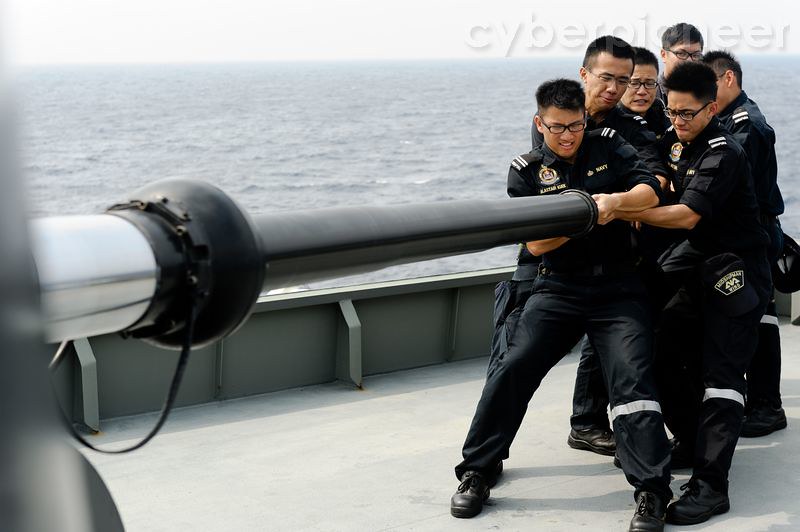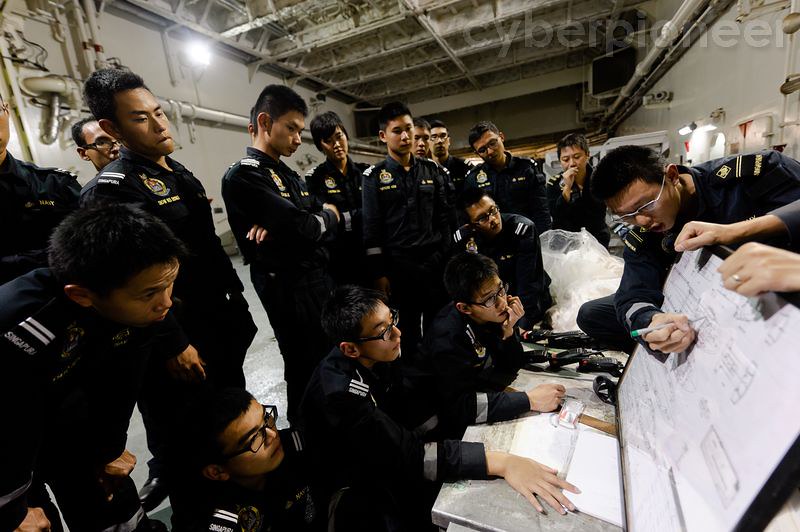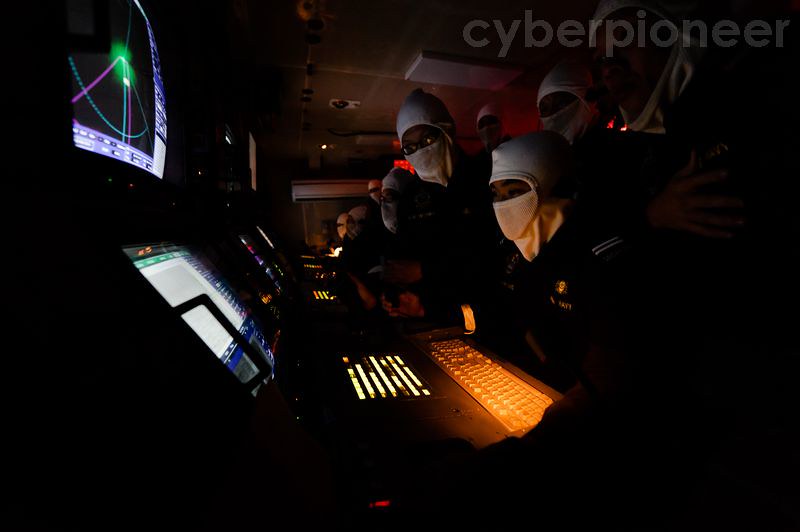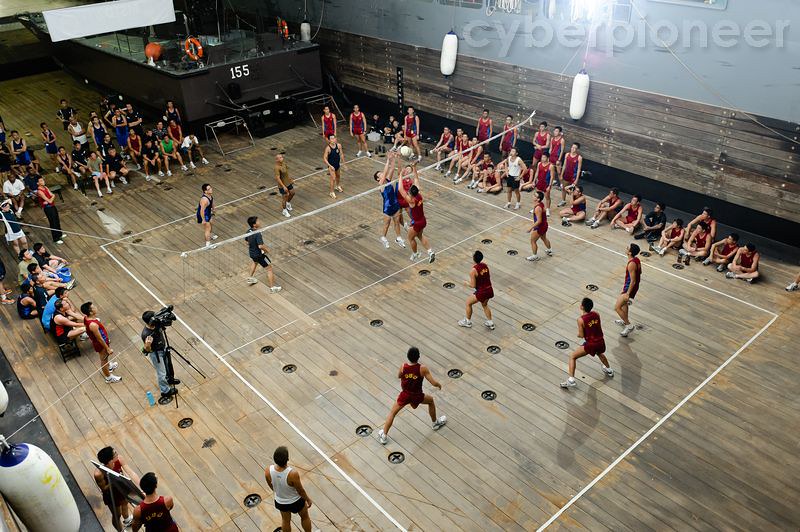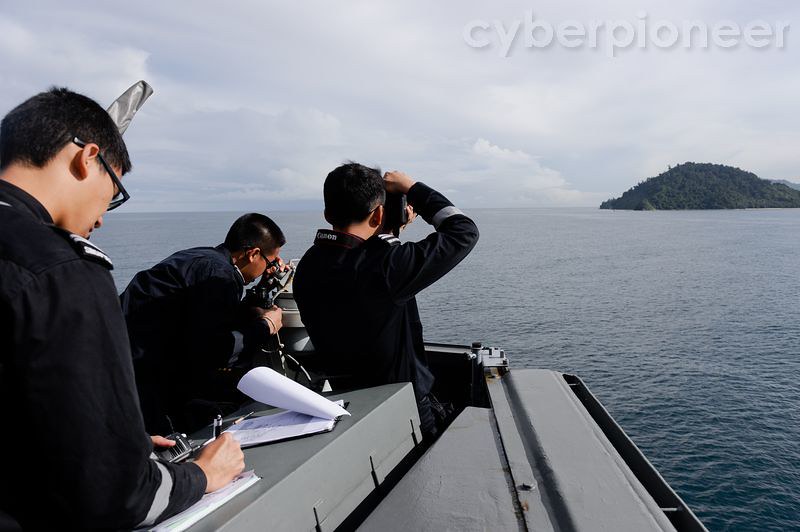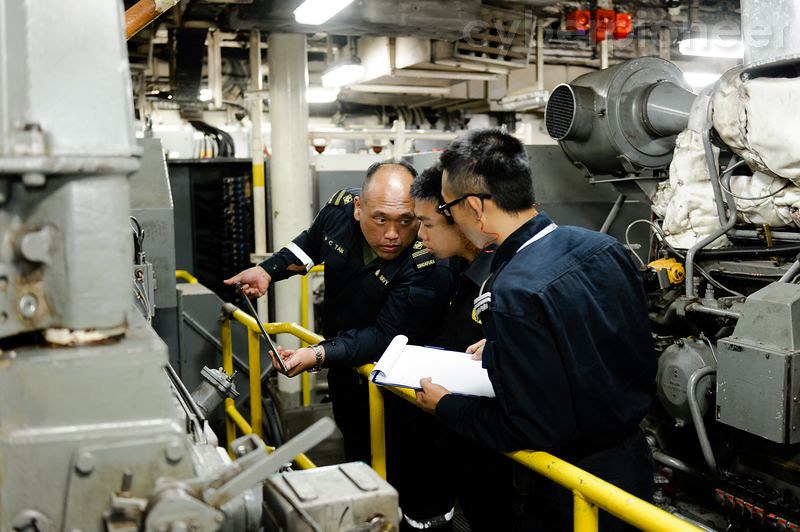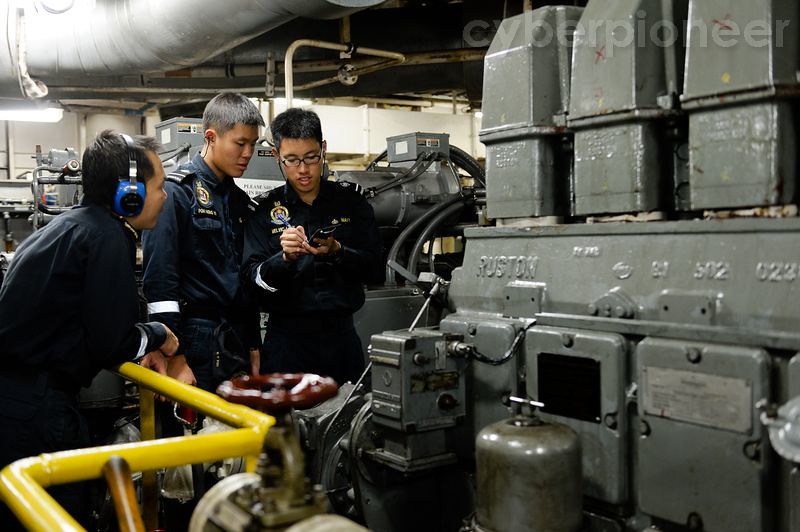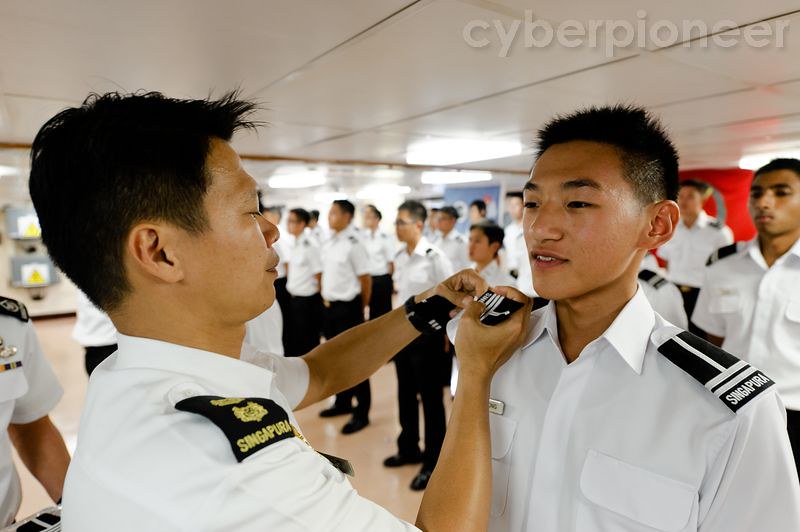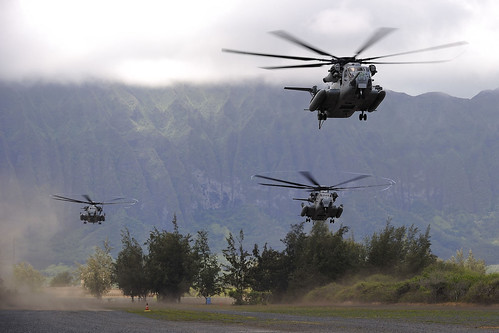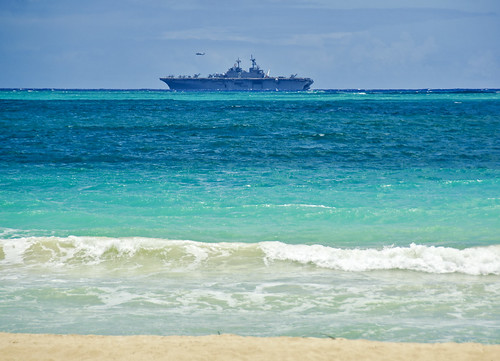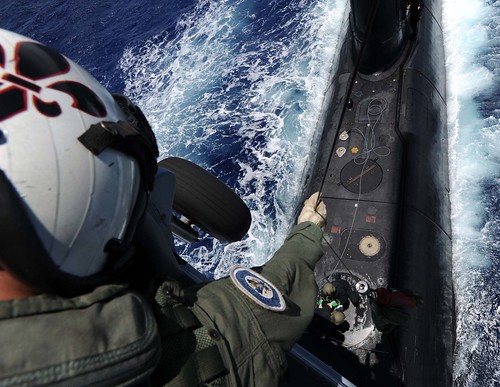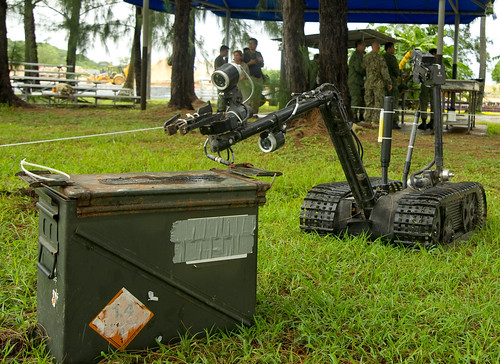DEFENCE MANAGEMENT JOURNAL, ISSUE 55 -- RSN Rear Admiral Harris Chan outlines to DMJ the valuable experience gained for the Singapore Armed Forces (SAF) in commanding CTF 151 in counter-piracy operations
Led by
Rear-Admiral (RADM) Harris Chan, Singaporean and international naval officers working together as part of the CTF 151 command team, in an operations brief on USS Mason. Mayor Laut (P) Dickry Rizanny N from the Indonesian Navy and Major (L) Mohammad Bahrin bin Md Yusof from the Royal Brunei Navy were two of seven International Officers (from Brunei, Indonesia, the Philippines, Thailand, New Zealand, Republic of Korea, United States, and Saudi Arabia) working with the SAF Command Team.
DMJ: What was the SAF's role in CTF 151, and what did CTF 151 accomplish during the period under RSN command?
Rear Admiral Harris Chan: The SAF commanded CTF 151 from March to June 2011, the second time the SAF has been given the command. CTF 151 operates under the ambit of the CMF and cooperates with forces from North Atlantic Treaty Organisation (NATO), European Union Naval Forces (EUNAVFOR) and other independent naval deployers such as China, India, Indonesia and Russia. CTF 151 also works closely with various maritime agencies such as the UK Maritime Trade Organisation (UKMTO) and the International Maritime Organisation (IMO) to share information and coordinate actions at sea. The primary role of CTF 151 was in the coordination of counter-piracy operations to disrupt piracy in the Gulf of Aden.
During our command, CTF 151 was also the Internationally Recommended Transit Corridor (IRTC) coordinator from 15th March 2011 to 25th June 2011 and was responsible to plan for the force flow within the IRTC, and to ensure that the area was comprehensively covered by the coalition warships from CTF 151,
NATO and
EUNAVFOR. This required us to work closely with them to coordinate the disposition of the warships, while balancing their differing operational needs and national tasking. There were high-risk areas within the IRTC, and our priority was to ensure that the ships patrolling in these locations were able to respond swiftly to any piracy incidents. Whenever a piracy incident occurred in the IRTC, CTF 151 would direct the initial counter-piracy response by tasking the nearest coalition ship to conduct an investigation. The tight linkages that have been established with the
coalition ships in the area have enabled the successful disruption of a number of pirate attacks during SAF's tenure as the CTF 151 command team.
The SAF-led CTF 151 also shared intelligence reports and analysis with the rest of the coalition forces, which enabled a more coordinated operation against the pirates.
In addition, we conducted numerous ship visits with not only the navies participating in CTF 151 and EUNAVFOR, but also those from independently deployed navies. By the end of our command tour, we had visited ships from the navies of
China, Indonesia,
Japan, the
Republic of Korea, Pakistan, the
UK and the
US. These visits were conducted with the aim of forging closer ties amongst the naval forces, strengthening coordination and cooperation, and reinforcing the need for tight information sharing.
We also conducted regular counter-piracy exercises to enhance the interoperability amongst the various naval forces at sea. Initiated by the last SAF-led CTF 151 command team during their tenure in 2010, the aim of the exercise is to familiarise units under CTF 151 with counter-piracy processes and responses. During our tenure, we conducted a total of eight exercises with naval ships from Indonesia, the Republic of Korea, Pakistan, the UK, the US, as well as with the
New Zealand Defence Forces team currently leading CTF 151.
DMJ: What assets have the SAF deployed in the Gulf of Aden and what are the logistical challenges involved?
Rear Admiral Harris Chan: To date, the SAF has deployed three Task Groups (TGs) to participate in the counter-piracy efforts in the Gulf of Aden, and have taken command of CTF 151 twice. The first TG deployment was from April to July 2009, the second from June to September 2010 and the third TG was deployed in August this year. Each TG comprised a Landing Ship Tank (LST), two Super Puma helicopters as well as 229 men and women from the navy, air force and the army. In April this year, the SAF also deployed a
Fokker 50 Maritime Patrol Aircraft for the first time to perform maritime surveillance operations in the Gulf of Aden.
Deployments of such extended nature require us to understand thoroughly the logistical support required, and to continuously learn and adapt, in order to overcome challenges. A case in point is how the SAF adapted and developed a robust maintenance regime for the land-based Super Puma helicopters, to ensure they remain safe and operationally ready for deployments at sea. To optimise our lean manning resources, we have leveraged on videoconferencing to facilitate troubleshooting support with the help of engineering experts back home in order to enable precise and expeditious rectification of defects at sea.
Information Sharing: a key enabler for counter-piracy
Benefits of information sharing were also apparent when information was shared timely to create awareness among forces at sea, assets in the air, the merchant shipping community and other navies operating in the region when RSN commanded CTF 151 in the Gulf of Aden. Besides
CENTRIXS (US and US coalition members' communications system) and MERCURY (British initiative - real time communications tool for independent navies and
SHADE participants on counter-piracy patrol), the RSN also introduced the use of the portable ACCESS 2 system to various navies (Djibouti Maritime HQ, Bahrain SNR, Yemeni Coast Guard and Pakistan Navy) without CENTRIXS to facilitate greater information sharing and to enhance their situational awareness. The Singapore led mission acquired new capabilities such as geo-spatial analysis and OSINT for the duration of the RSN's command on CTF-151.

























